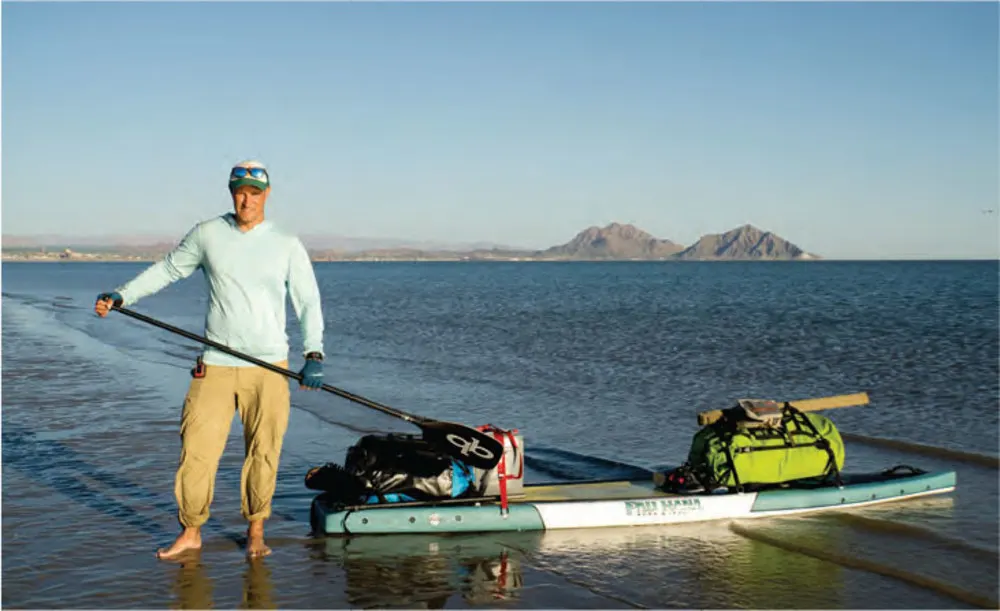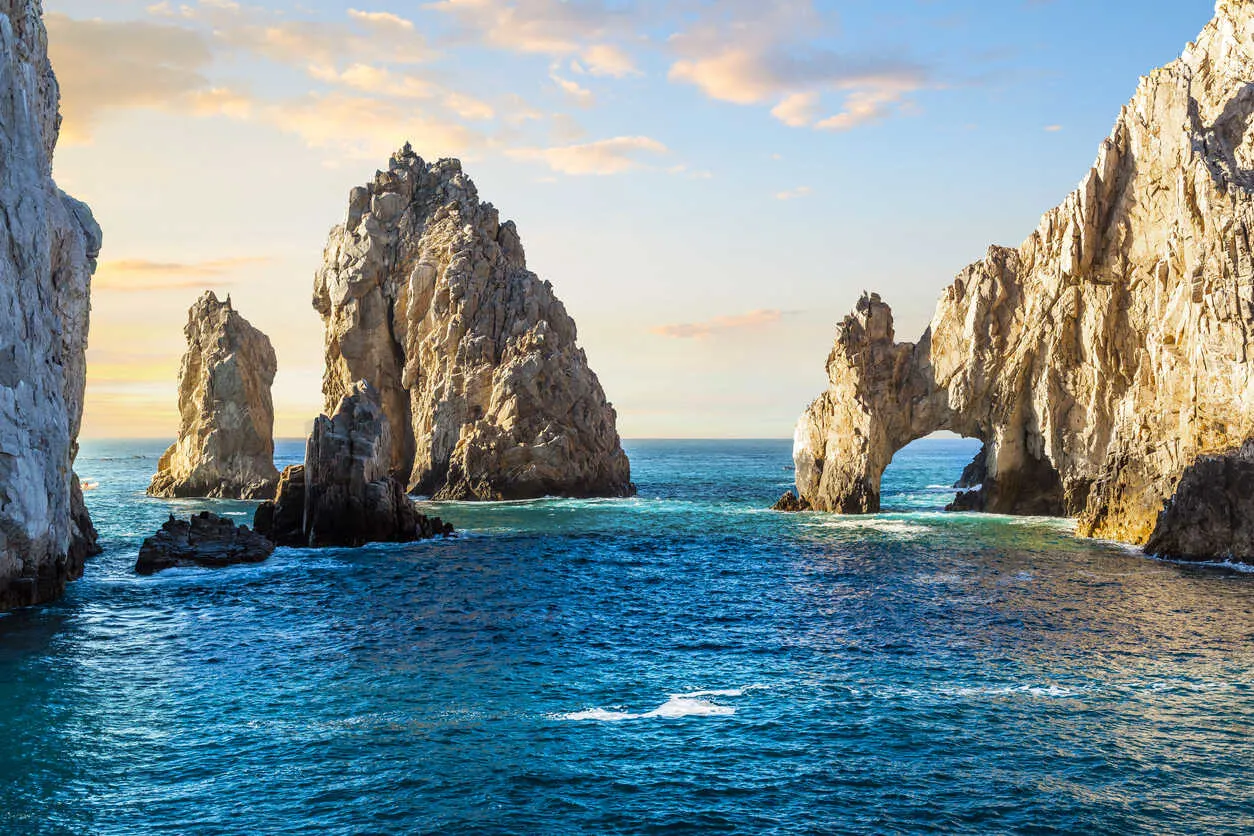It was 10 a.m., and my skin was already cooking from the Baja desert sun. Despite the beauty all around, my sole focus was literally trying not to die.
I’d come 500 miles on a 12-foot standup paddleboard to Bahía Concepción… a bay I’d been dreaming about since I’d first thought up this adventure. I was halfway into a 1,000-mile journey down the Sea of Cortez from San Felipe near the Colorado River Delta to Cabo San Lucas.
Get Your Free Mexico Report Today!
Get Your Free Mexico Report Today!
Learn more about Mexico and other countries in our daily postcard e-letter. Simply enter your email address below and we’ll send you a free special report – Mexico: The Perfect Close-to-Home Retirement Haven.

By submitting your email address, you will receive a free subscription to IL Postcards and special offers from International Living and our affiliates. You can unsubscribe at any time, and we encourage you to read more about our Privacy Policy.
When I first conceptualized the trip, I dreamed of crystal-clear water that sparkled with each paddle stroke. Fish jumping out of the blue, whales and dolphins swimming up to say hello, and beaches so pristine that my footprint would be the first in history to land there.
I also dreamed of writing a book about the journey, and donating the funds to a special cause…
Most of my teenage and early adult life was spent driving across the border from my hometown of San Clemente in Southern California on surf trips up and down the Baja peninsula. I went down to party, surf, and fish… a lifestyle I enjoyed for nearly 17 years. It was too easy, too cheap, and too fun to pass up.
But something was bothering me. Not about the place itself, but what I was offering. I hadn’t done anything for the natural environment that had given me so much. The crashing waves, the white sand beaches, the towering mountains filled with cacti, and the plethora of wildlife that call the landscape and sea home.
Scrolling social media, I found a post about a critically endangered porpoise that lives in the Sea of Cortez. And that discovery changed my life. It was a wake-up call and a problem I felt I could do something about. The vaquita porpoise is the world’s smallest cetacean, as well as the most endangered. They’re snared as bycatch in nets intended for the totoaba—an illegal quarry.
Totoaba swim bladders are worth $10,000 a kilo and sold on the black market to buyers in China, where there’s a high demand. As a result, the gentle vaquita are nearly extinct, with perhaps only six to eight left in their area of study.
No one had attempted to paddle the entire Baja Peninsula—the second-longest peninsula on earth (after the Malay Peninsula). It took months of planning and research to determine if it was even possible. I studied weather patterns, wind cycles, hurricane tracks, and (so I thought)heat indexes.
A Precarious Dance of Beauty and Danger

On October 10, 2023, I set out from San Felipe, carrying two dry bags, nine gallons of water, a tent, clothes, and food for at least a week.
Five hundred miles and 45 days of wind, waves, rocky coasts, and sharks later, I arrived at Bahía Concepción, where the oven was on broil, and I was in for a deadly crisping if I didn’t lay low.
So, from 10 a.m. until the sun went down, all I did was lay against a giant mesquite tree—the lone shade I managed to find—and stare out at the turquoise-blue water.
I couldn’t have been more grateful for the comfort and embrace of that tree; in a weird way, it felt like it was meant to be there, protecting me against the harsh conditions. (I could have walked over to the shore and taken a dip, but the hot, salty water was far from refreshing.)
I knew I was going to be paddling through a desert. I knew there were going to be long carries of fresh water: a week’s worth or even ten days without the ability to replenish. I knew the deserts would be hot… just not that I was going to be a cooked gringo waiting in the sun for whatever turkey vulture happened to be flying by.
But there were serendipitous moments I didn’t expect either, which came at me in the most wonderful ways…
I witnessed the incredible beauty of the Baja coastline, and basked in the glow of the shimmering, sunlit sea. I talked to the osprey, pelicans, and various other sea birds that flew overhead. And admired, from the height of my paddleboard, an abundance of fish so colorful I didn’t know the palette to describe them… along with predators I had to respect for their role in the environment.
The sharks mostly swam below or darted away in fear… except for one that aggressively approached me, giving me the scare of my life.
Dangers abounded in the water, but land wasn’t necessarily a safe haven. Snakes slithered the landscape and had me cautiously watching where I put my foot. And coyotes ravaged my camp at night, looking for the food I’d hidden deep within my dry bags.
Yet there were plenty of tiny rewards to inspire me on. Bushes, trees, cacti, and flowers, caught in gusts of wind, waved to me in welcome. Hummingbirds danced above blooming flowers after hurricane rains, and the smell of the blossoms was the sweetest nectar after a long day’s paddle.
Marrying Baja With My Paddleboard
I discovered standup paddling (SUP) shortly after I learned to surf at age 11. Over time, the combination of the two sports gave me courage and competence on the sea.
With good conditions, almost anyone can paddleboard. I don’t consider myself an athlete (and my endeavor wasn’t sponsored). But to attempt this kind of journey, you do need to be a student of the sea. The experience I’d gathered was invaluable to read the conditions at hand.
I’d set off without any real knowledge about porpoises like the vaquita (or any other cetaceans). I stroked the waters of the Sea of Cortez with the only weapons in my arsenal: knowledge of the region, the sea, and good old-fashioned tenacity. I knew I could complete the trip should Mother Nature let me.
A hurricane-ravaged many towns up and down the peninsula, leaving me stranded on a beach with little to no protection. Waves pounded the shore, tossing up anything and everything, including washed-up whales, turtles, and fish. Northern winds whipped to well over 50 knots some days, threatening to break my tent and pelting my skin with sand.
On December 14—153 days after leaving San Felipe—I stroked my way into the bay at Cabo San Lucas.
I had visions of a glamorous finish, but alas, no paparazzi were there to greet me…
I saw people on tour boats heading out to Land’s End, the infamous arch at the tip of Baja. Others were kayaking and cruising on party boats. It was just me, my thoughts, and fellow tourists taking in the beautiful bay.
A Return to Old California… and Endless Adventure

Baja is a place where time doesn’t run, it walks. I learned that the hard way… I paddled 70 days and had to camp out the other 53 days, thanks to weather, hurricanes, sickness, and exhaustion.
They say Baja is a four-letter word—at times, the media portrays it as Hell, a place that needs a border wall to prevent drugs and other trafficking into the US.
But for myself and others, that word is Love. Baja is arguably what the state of California was 200 years ago. It’s a place where people smile and wave as you go by. Tumbleweeds still roll across the streets, and locals still ride horses.
Here, you can enjoy a laid-back, carefree lifestyle surrounded by natural beauty. The Baja can never be conquered, or even fully explored in a lifetime. Because of that, there are endless opportunities for adventure. Its irresistible appeal keeps many of us going back across the border year after year.
I hope conservation efforts, and perhaps my paddle down the entire peninsula, will help inspire others to come as well… with humility and a sense of wonder… to find something they care about, and to give back to a place that offers us so much.
I recorded my paddle experience in articles and photographs (see more images in your digital issue). And I wrote that book… now available on Amazon. The proceeds—100%—will be donated to conservation, furthering protection for the vaquita porpoise.
Get Your Free Mexico Report Today!
Get Your Free Mexico Report Today!
Learn more about Mexico and other countries in our daily postcard e-letter. Simply enter your email address below and we’ll send you a free special report – Mexico: The Perfect Close-to-Home Retirement Haven.

By submitting your email address, you will receive a free subscription to IL Postcards and special offers from International Living and our affiliates. You can unsubscribe at any time, and we encourage you to read more about our Privacy Policy.
